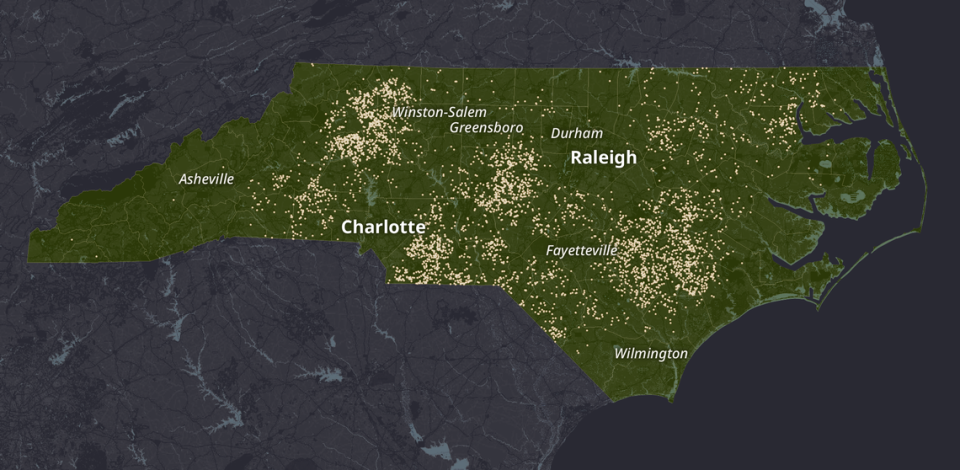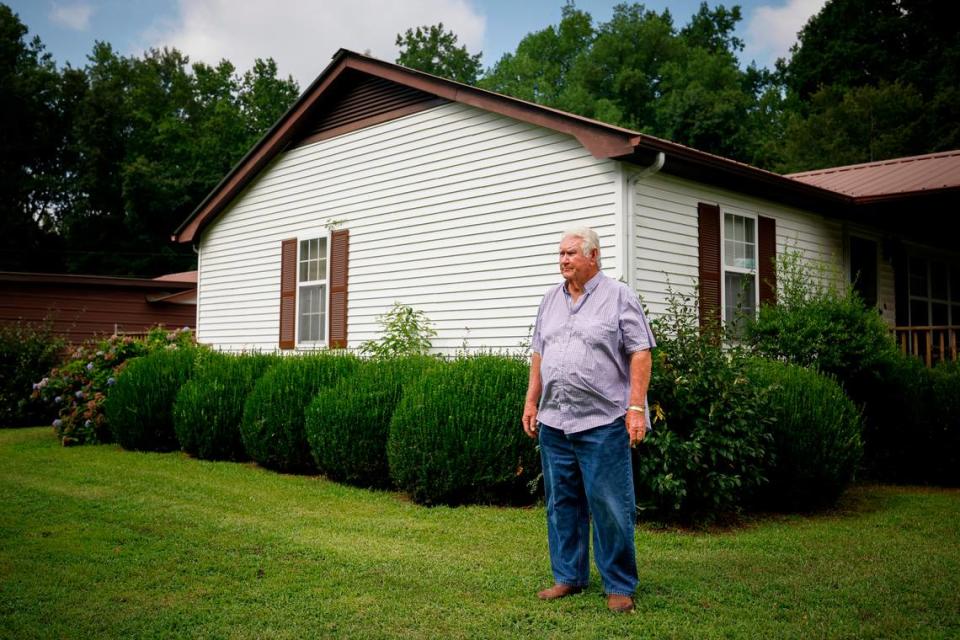Bill seeks to curb risks that NC poultry farms pose to neighbors, the environment
- Oops!Something went wrong.Please try again later.
A new bill proposes regulating North Carolina’s industrial-scale poultry farms more aggressively to reduce risks to neighbors and the environment.
The bill, introduced Tuesday by Rep. Pricey Harrison, would also prohibit the construction of industrial animal operations in floodplains and require a sweeping study of the environmental and public health impacts of poultry waste in North Carolina, along with potential solutions for minimizing those effects.
Harrison, a Guilford County Democrat, said her bill was inspired by “Big Poultry,” a recent Charlotte Observer and News & Observer investigation into an industry that has been allowed to grow in North Carolina with little regulation, despite evidence of harm to neighbors and the environment.
Given the desire among many Republicans to scale back state regulations, Harrison said she’s not optimistic the bill will pass this year. But she hopes it will begin to spur discussions and research that ultimately lead to stronger protections, she said.
“Clearly, as your series brought out, this is a problem all around — for water quality, for the environment and for neighbors,” Harrison said.
Bob Ford, who heads the poultry industry’s main trade group in North Carolina, said he sees no need for additional regulation or study of the industry.

Farmers and poultry companies work hard to protect those who live near barns, he said, noting that they’ve put in place voluntary setbacks designed to ensure farms aren’t built too close to homes. The federation’s guidelines say that poultry farms shouldn’t be built closer than 1,000 feet to an occupied residence.
“We seem to be getting along fine the way we are,” said Ford, executive director of the N.C. Poultry Federation. “...We try to build (farms) where they’re not a hindrance.”
Big Poultry: Part 1
North Carolina’s poultry industry has taken flight. Farms now stand near the mountains, the coast and the state’s largest cities. The birds generate billions of pounds of untreated waste – more than NC’s infamous hogs. But legislators cloak this industry in secrecy. What's the cost?
With little oversight, NC poultry farms raise 1 billion birds a year. Who pays the cost?
NC lawmakers have steadily changed rules, added protections to help poultry industry
Chickens produce billions of pounds of waste in NC. But no one is tracking it.
The package says the chicken is “free range.” That may not mean what you think.
Bill seeks to curb risks that NC poultry farms pose to neighbors, the environment.
The Observer’s investigation found that poultry farms raise more than 1 billion birds annually in densely packed farms. Those birds produce billions of pounds of waste, and some of that washes into public waterways.
Among other things, Harrison’s bill would:
▪ For the first time require poultry farms with 30,000 or more birds to apply for environmental permits, which are now automatic without applications or inspections. That would cover the large majority of industrial poultry farms in the state. New poultry farms would have to be designed, constructed and operated “so that there is no discharge of pollutants to waters of the State,” a draft of the bill states.
▪ Mandate that the Environmental Review Commission conduct a wide-ranging study of the state’s poultry farms, including their locations, the amount of waste they produce, how that manure is disposed of, and how it affects the environment and public health.
▪ Prohibit any part of an industrial animal waste management system from being built in 100-year floodplains. At least 232 barns – housing as many as 5.8 million birds at once – sit in floodplains, the newspapers’ investigation found. North Carolina bought out many hog farms in flood-prone areas, but not poultry farms. Ford said he believes all the poultry barns now in floodplains are older — and that poultry companies aren’t allowing farms to be built on floodplains today.
▪ Set up an “agriculture share program” aimed at reducing pollution. Part of the money could be used to buy out poultry farms in floodplains.
▪ Make the location, size and ownership of poultry farms publicly available.

Environmental regulators currently don’t inspect farms that house birds in barns as long as two football fields. They don’t monitor where all their waste goes. They don’t even know where most of the farms are. State agriculture officials keep that information confidential.
About 230,000 North Carolinians now live within a half-mile of a poultry farm, the Observer’s investigation found. and many who live nearby say they’ve been forced to live with the overpowering odors, the turkey vultures and other nuisances that the farms bring. Dust particles from the manure, feed and feathers can travel several miles, and has been linked to respiratory problems.
But public officials have shielded the poultry industry from lawsuits, regulation and public disclosure. And there is little that residents and local governments can do to stop farms from being built nearby.
Harrison said she knows critics may characterize the bill as an effort to kill the poultry industry.
“That’s not what we’re trying to do,” she said. “We’re trying to live with this industry.”
News and Observer Staff Writer Adam Wagner contributed to this story.

